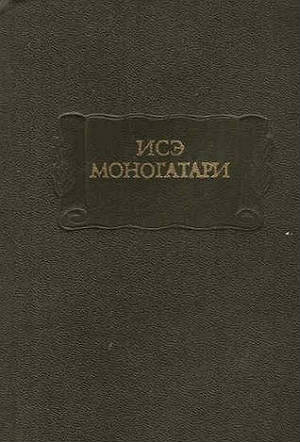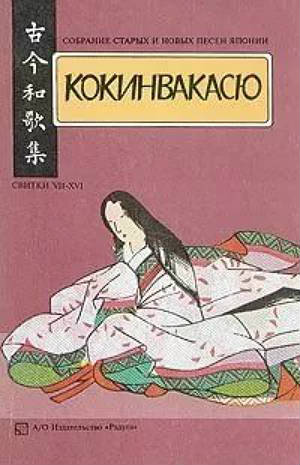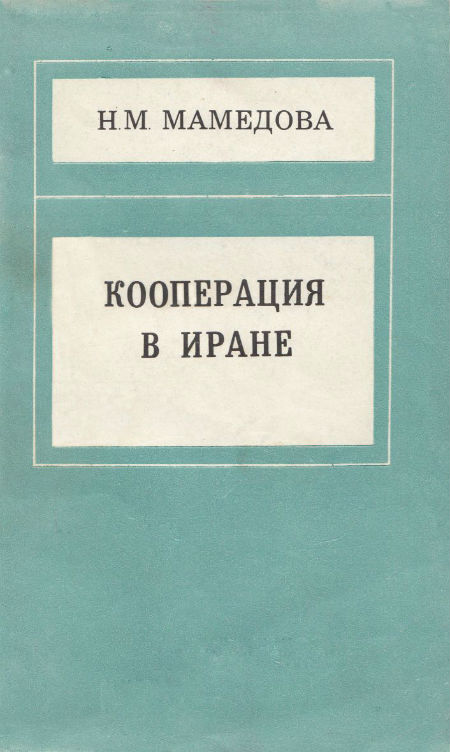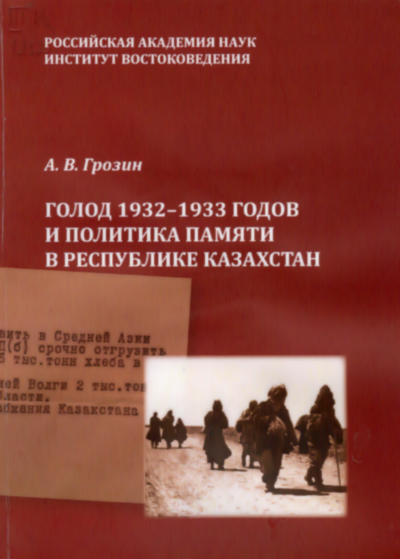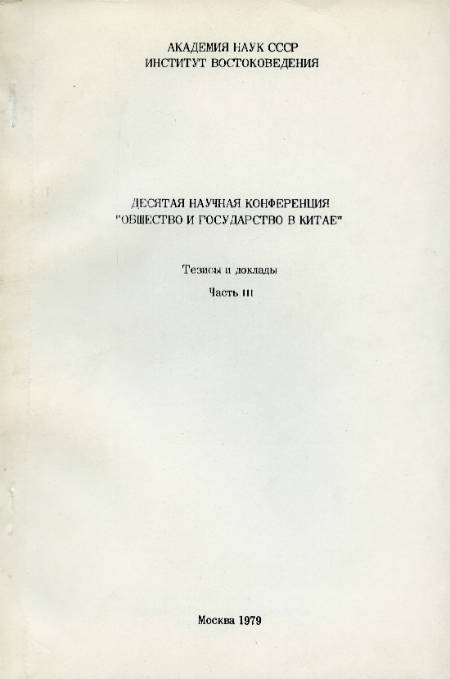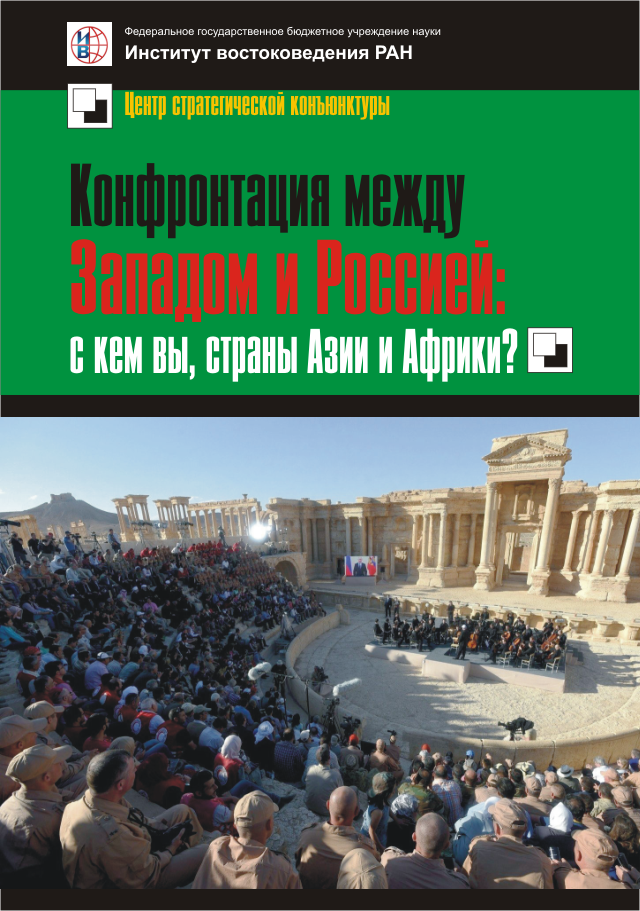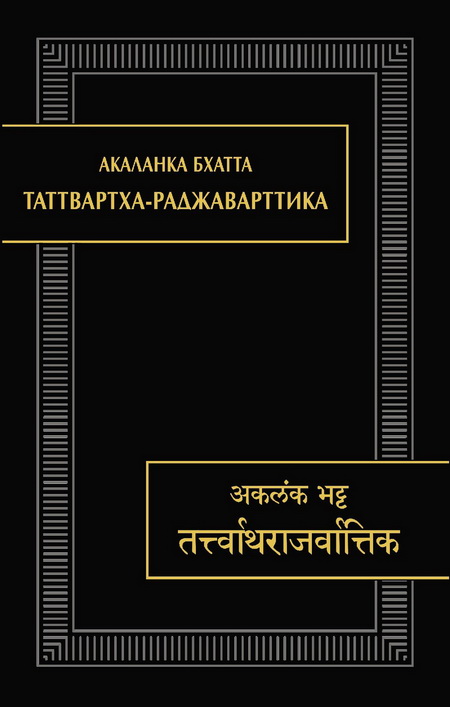Book
Tattvārtha-rājavārttika
: Zheleznova Natalia
: Zheleznova Natalia
: Zheleznova Natalia
Institute of Oriental Studies of the Russian Academy of Sciences, ,
Москва, 2022, 1071 p.
This is the first European and Russian translation of the great Digambara text named Tattvārtha-rājavārttika – a Sanskrit subcommentary written by Akalaṅka Bhaṭṭa (8th cent.) on Umasvati’s Tattvārtha-sūtra (3-4th cent.). The book consists of an Introduction, a complete commented translation from Sanskrit into Russian, Bibliography, Indices of Names and Texts.
The Introduction gives information about the Digambara logic and philosopher known under the different names Akalaṅka Bhaṭṭa, Akalaṅkadeva, Bhaṭṭākalaṅka or even just Akalaṅka. The author notes that unlike his predecessors’ the life time of Akalaṅka is not a subject of bitter disputes among Indologists and historians. All of them consider Akalaṅka belonging to 8th cent. In the Introduction Akalaṅka’s earliest hagiographies are analyzed with the special references to his connections with Buddhists. It is also shown there that the Akalaṅka’s text is a wonderful example of philosophical commentary which includes every characteristic, distinguishing the proper exegetical work. From the textual point of view Tattvārtha-rājavārttika incorporates the full text of Tattvārtha-sūtra of Umāsvāti and it absorbs almost (but not completely) the first Digambara commentary-vṛtti, i.e, Pūjyapāda’s Sarvārthasiddhi (5-6th cent). Akalaṅka’s deep and broad knowledge of the teachings of other schools of Indian philosophy, his understanding of the intricacies and nuances of grammar, the talent of the debater and the ability to build a reasoned logical refutation of alternative views and positions allowed him to create a great philosophical text, clearly demonstrating a high level of theoretical reflection among the Mahāvīra’s followers. He presentes a sample of philosophical commentary in Sanskrit, standing exegetical line of "continuity" from Sarvārthasiddhi of Pūjyapāda to the commentary of the third level – Vidyānandin’s Tattvārthaśloka-vārttika (IX C.E.), which will be a culmination of Digambara commentary tradition.
The first adhyāya is the biggest chapter in this subcommentary and therefore it is divided into five smaller parts called āhnika (lit. “daily portion”). As a whole this adhyāya is dedicated to the explication of the main Jain theoretical triad — right knowledge (jñāna), right vision (darśana) and right conduct (cāritra) which constitute the path of liberation (mokşamārga). Akalaṅka gives the full exposition of Jaina approach to the understanding of what is real liberation means pointing out, that only “three jewels” altogether could help to reach the highest goal, not one of them as other philosophers claim. He considers all possible arguments put forward by different opponents of Jainism, basically Vaiśeṣikas, Naiyāyikas, Buddhist and Sāṃkhyāyikas. At the same time in the commentary there is an extensive analysis from the grammatical and philosophical points of view of the different concepts and notions used by Umasvāti’s and Pūjyapāda’s texts. Akalaṅka specifies the Jain methodology in the process to gain true knowledge through the application of anekāntavāda (lit. “theory of non-onesideness”) because only multilateral method of the description of the diversified reality makes the possibility to perceive the truthfulness as it is.
In the second adhyāya main characteristics of the soul (jīva) and its different states are explained. These are subsiding, destructional, mixed, transformational and operative karmic states. The author of the subcommentary asserts that from the point of relative pluralism (anekāntavāda) it is possible to have two or more states in one particular soul. The mundane souls differ from each other in the basis of their various conditions and numbers of the senses. Akalaṅka, following to the logic of Umasvāti and his first Digambara commentator Pūjyapāda, pays special attention to the clarification of the concept of the body in Jain Philosophy with special interest attracted to five kinds of the body: the gross, the transformable, the projectable, the luminous and the karmic.
The main theme of the discussion in the third adhyāya is the description of the Lower and the Middle Worlds of the Universe in Jain Cosmology. The seven hells glow with progressively darker colors and their darkness has its own certain luminescent tint (prabhā). According to the level of the infernal regions their inhabitants have certain lifetime and types of suffering. Four hell are hot, fifth has heat and cold, and the other two are extremely cold. Hell-being, even when they decided to do well, cannot, as whatever they do results in double suffering due to the rise of bad karmic matter. The extensive picture of the Middle World encompasses the names and the length of the continents, oceans, mountain chains, lakes on the mountains and rivers. All beings, human and animal, there also are specified according to their region.
The forth adhyāya gives the detailed explication of the four orders of celestial being along with theirs subclasses. It includes the characteristic differences of their levels, nature of happiness, thought-complexions and duration of their lifetime.
The non-living (ajīva) substances are the main topics of the fifth adhyāya. It is pointed out that non-living does not merely imply the absence of life, but indicates a kind of positive substance instead. It includes matter (pudgala) and non-material substances: medium of motion, medium of rest, space and time with all their particular attributes and different modes. Akalaṅka consistently refutes the Vaiśeṣikas’ views who stated that substance is something separate from its attributes. He considers all the opponents’ doctrines (mostly Kaṇāda followers, Sāṃkhyāyikas and Buddhists) on matter, space and others as one-sided (ekāntika) position which is untenable. Only Jain understanding of non-living substances can give the adequate picture of the reality.
The sixth adhyāya is dedicated to the influx (āsrava) of karma. From this chapter up to the end of the subcommentary the main subject of the text is the ethics of Jainism. Here the author gives the answers on questions what the causes of the karmic influx are, how many kinds of karmic matter exist and so on. The different types of activity and the certain species of karma determining the level of existence are discussed in this adhyāya.
In order to stop the influx and to prevent the further degradation of the soul the certain vows (vrata) must be taken. So next, seventh, adhyāya explains which exactly restrictions are necessary for householder and for homeless ascetic and how there are should be observed in a proper way. Besides that Akalaṅka explains the division the vows into two kinds: great and subsidiary. Among other themes he gives the description of voluntary death, it’s subtypes and methods answering regarding why it is not sinful like suicide.
The eighth adhyāya tells about bondage (bandha) of karma, its causes, types, duration and fruition. The author pays special attention to deny other views on bondage. The peculiarity of Jain philosophy is elucidated through the refutation of false believes represented by other philosophical schools such as Vaiśeṣikas, Sāṃkhyāyikas and Mīmāṃsakas. It is stated that the Vedas, which are taught to sacrificial killing of animals, could not be considered as scripture since they advise violence. The Jain Scriptures, on the contrary, prohibit any sort of killing because taking life earns demeritorious karma whatever the motive underlying the act of slaughter. In this chapter author also shows how the karmic particles pervade into the soul, making it dirty and ignorant. The minimum and maximum duration of karma of each sort are calculated here.
The ninth adhyāya is devoted to the analysis of concept of stoppage (saṃvara) and shedding (nirjarā) of karma. It is necessary to understand the fourteen stages of spiritual progression in order to know the nature of cessation of influx. This process is based on various kinds of austerity which is considered the main instrument to obtain liberation from saṃsāra. The true asceticism must be practiced along with veritable type of meditation. So the commentator explains in detail four types of concentration according to Jain doctrine, viz. the sorrowful, the cruel, the virtuous and the pure are explained thoroughly.
The last, shortest, adhyāya is devoted to the omniscience which means liberation (mokṣa) from the world of births and deaths. After realization of their nature and obtaining freedom from karmic matter liberated souls (siddha) soar up to the end of the universe. Akalaṅka Bhaṭṭa concludes his commentary by the description of subtypes of liberated being with a view of their areas of occupation.



